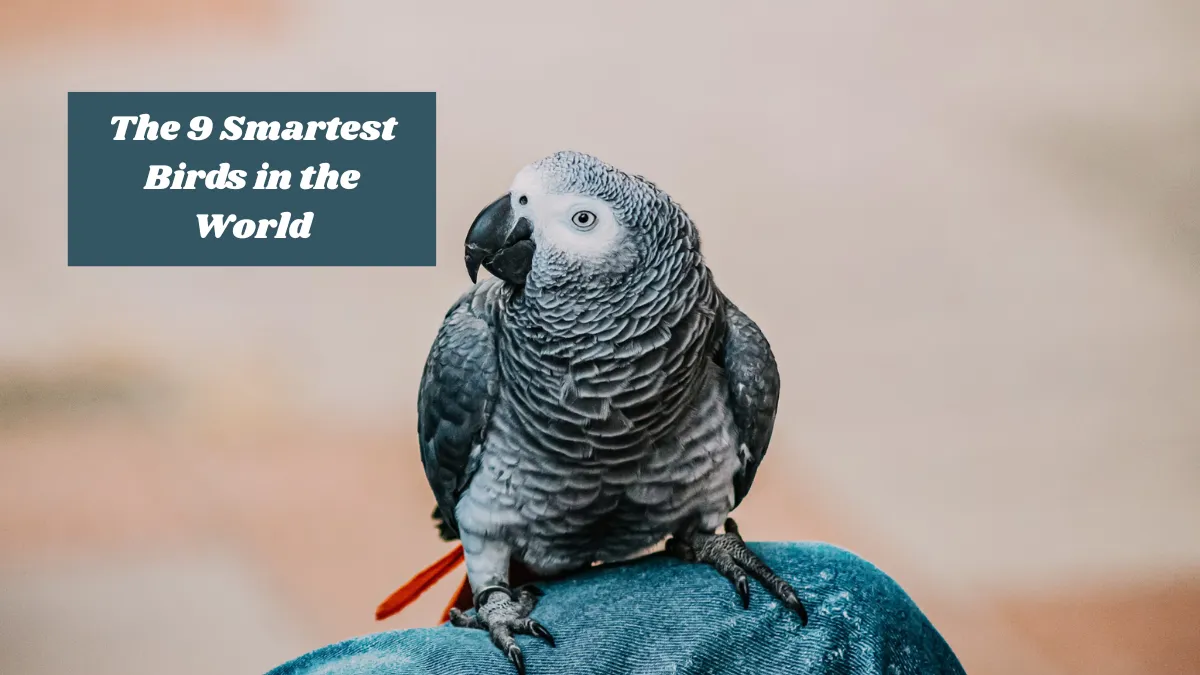We never realized just how closely brains and feathers are connected—until now. Some birds have proven they can recognize faces, plan for the future, solve complex puzzles, and even deceive each other! Here’s a look at some of the world’s smartest birds and why they’re capturing the attention of scientists everywhere.
New Caledonian Crow
Native to the forests of New Caledonia, this clever crow has stunned scientists with its natural knack for tool use. It crafts tools from twigs, leaves, and even its own feathers to dig out insects from tree bark.
In lab experiments, the New Caledonian crow has solved complex, multi-part challenges, including using one tool to retrieve another. A groundbreaking 2002 study found that they could bend wires into hooks to pull up food, reshaping our understanding of bird intelligence.
Grey Parrot
A single grey parrot named Alex transformed how we view animal communication. Under the guidance of Dr. Irene Pepperberg, Alex mastered over 100 words and could answer questions involving shapes, colors, and quantities.
When Alex said things like “wanna go back” or “I’m sorry,” he demonstrated a clear understanding rather than simple mimicry, showing real emotional and cognitive depth.
Common Raven
These large black birds show remarkable foresight and awareness of others. In controlled studies, ravens have selected tools they knew they’d need later, bypassing immediate rewards.
They also show deceptive behavior, like hiding food again if another raven was nearby earlier. This suggests they possess a form of theory of mind—understanding that others have thoughts and intentions separate from their own.
Kea
The kea, a parrot native to New Zealand’s alpine regions, is known for its playful and curious behavior. These birds unzip backpacks, pull apart equipment, and engage with human objects just for fun.
But behind that playful nature lies intelligence. In 2017, researchers found that keas could collaborate on puzzle-solving tasks—something even some primates struggle with. They also demonstrated logical thinking beyond simple training.
Eurasian Magpie
One of the few animals to pass the mirror test, the Eurasian magpie can recognize its own reflection. When faced with a mirror and a visible mark on its body, it attempted to remove the mark, indicating self-awareness.
Beyond that, magpies have been seen pretending to hide food to confuse onlookers, suggesting they anticipate the thoughts and actions of others in their environment.
Tanimbar Corella
Although Goffin’s cockatoos don’t normally use tools in their natural habitat, they excel at doing so in captivity. One particularly clever bird managed to unlock a five-step series of mechanisms to reach a reward.
Others have invented tools on their own using materials like cardboard or wood. Their adaptability and innovative thinking put them in a rare class of animals capable of problem-solving without direct instruction.
Woodpecker Finch
Hailing from the Galápagos Islands, the woodpecker finch is among the few birds to consistently use tools in the wild. It selects twigs or cactus spines to fish insects from deep tree crevices.
These birds even choose tools based on their suitability for a specific task, showing a clear understanding of function—without any human teaching involved.
American Crow
American crows have an impressive memory and strong social intelligence. Researchers wearing frightening masks once captured a group of crows, and years later, those same masks triggered hostile responses from the birds.
Even crows born after the event recognized the masks and reacted, indicating social transmission of knowledge. They’ve also been seen dropping nuts onto roads for cars to crack and waiting for traffic lights to change before retrieving them.
Eurasian Jay
This bird stands out for its mental tracking of food caches. Eurasian jays remember what kind of food they’ve hidden and when, returning earlier for items that spoil quickly.
They also change their hiding spots if another bird might have seen the original location, suggesting they can infer what others know. In experiments, jays even offered snacks to their mates based on their preferences, hinting at empathetic behavior.
Great Tit
These tiny birds once puzzled milk drinkers in Britain by opening foil caps on bottles to drink the cream. This wasn’t a one-time trick—it spread rapidly, showcasing cultural learning.
Great tits also exhibit the ability to learn from their environment and peers, adapt to new situations, and even use basic tools. Their quick learning and flexibility make them one of the most intelligent small birds around.
